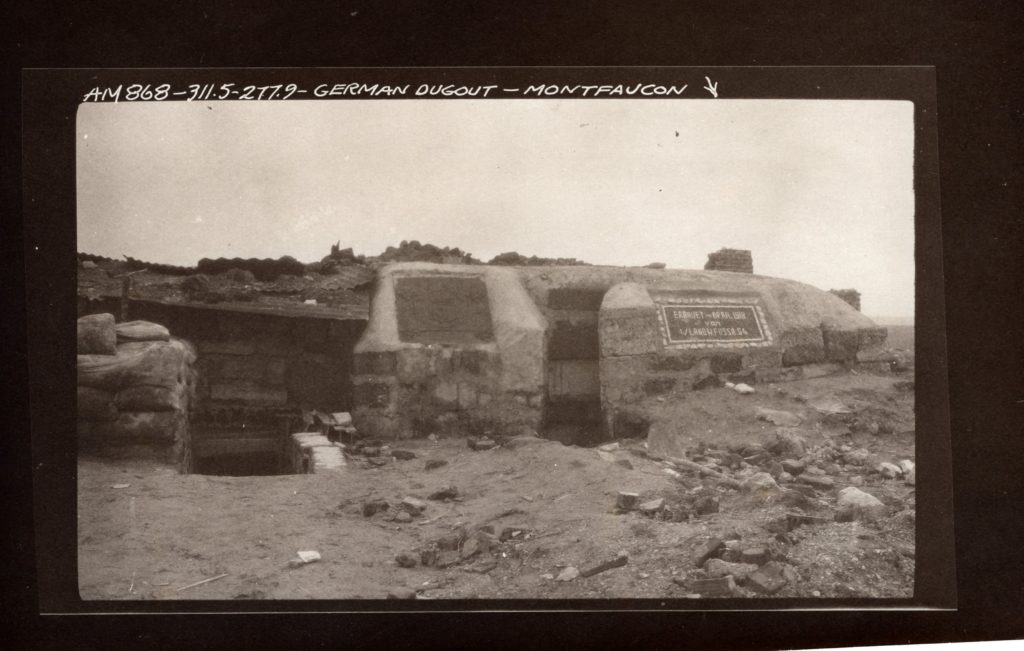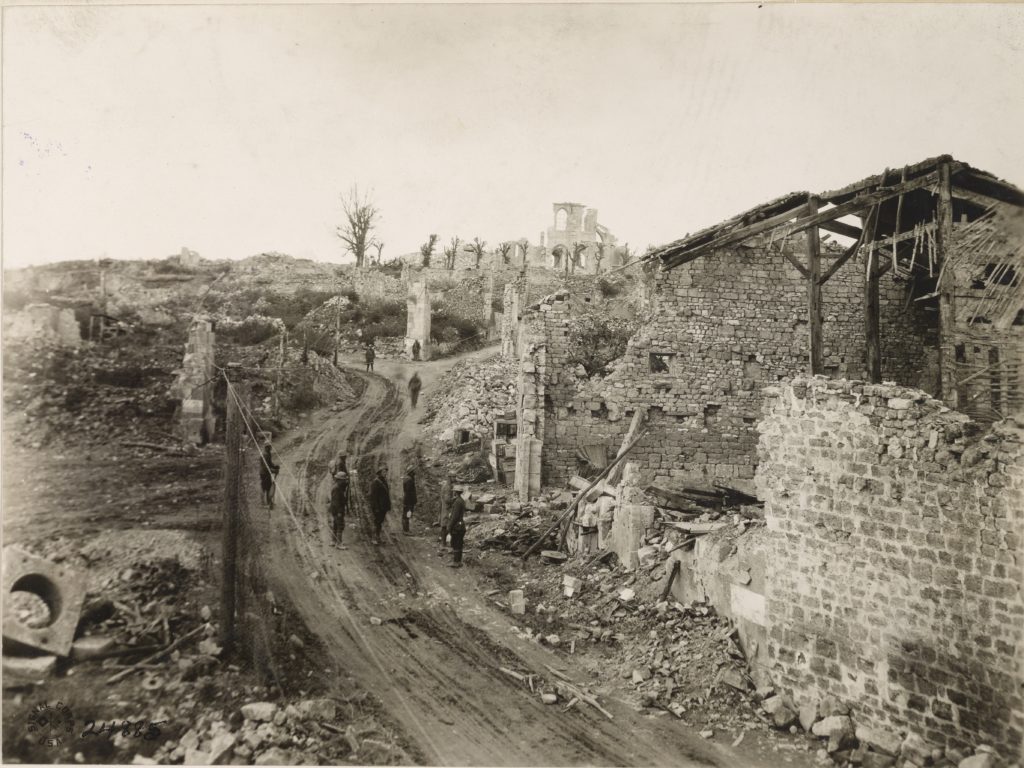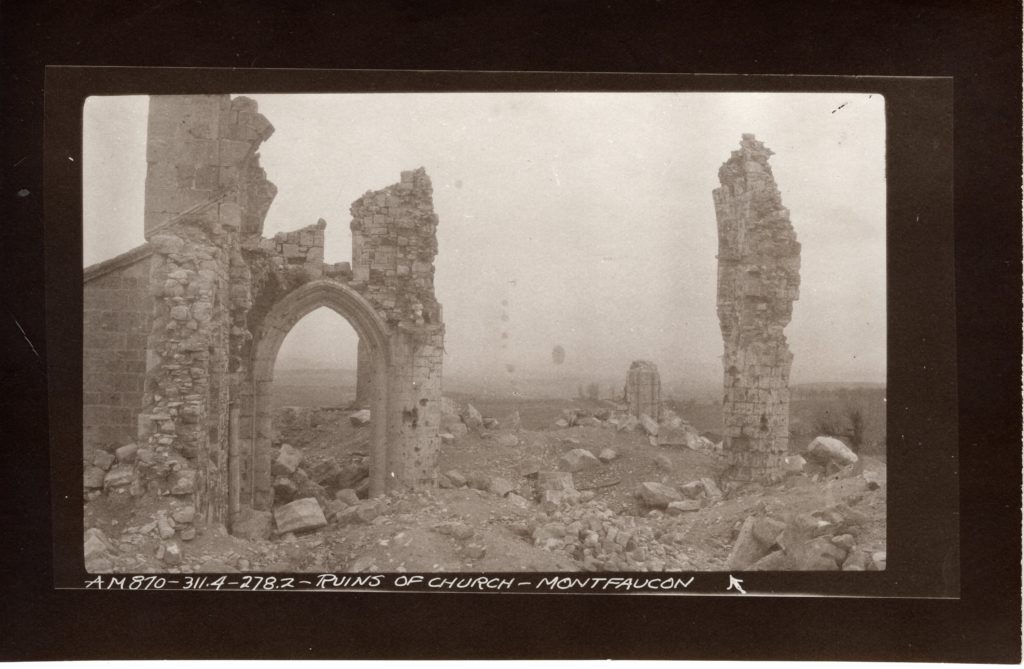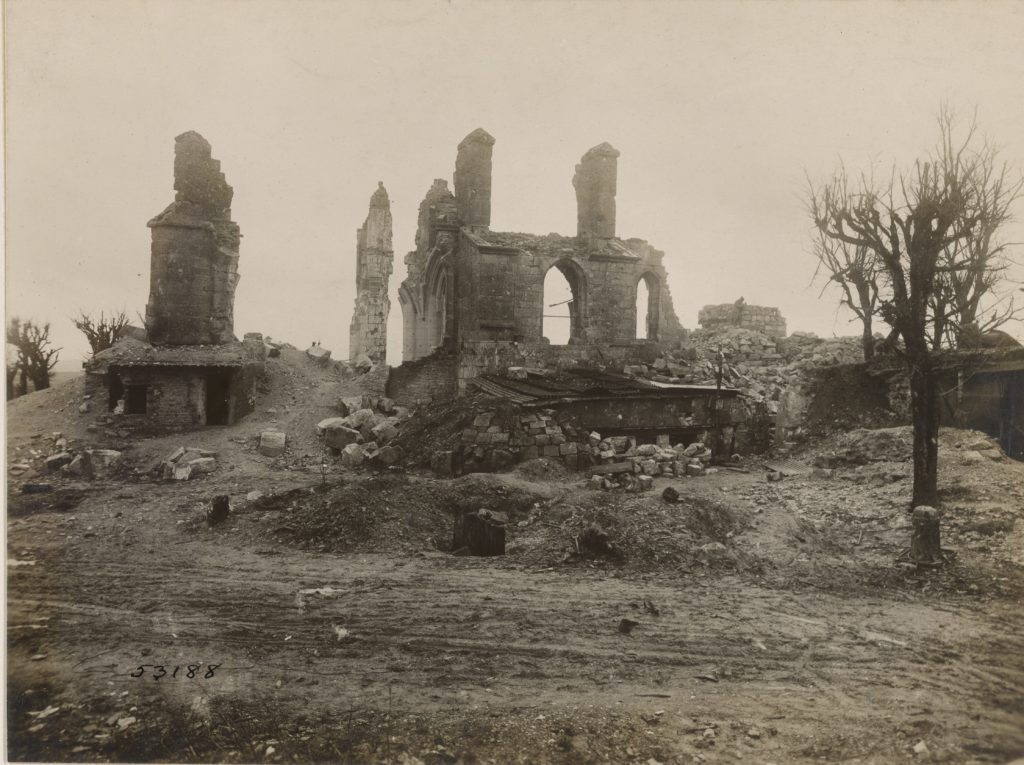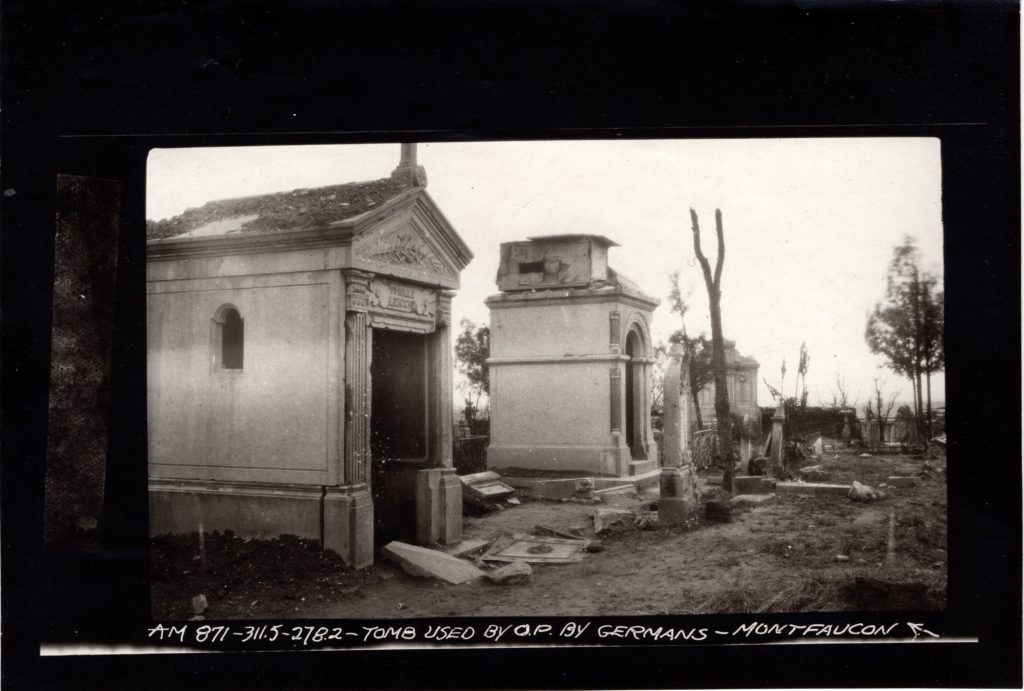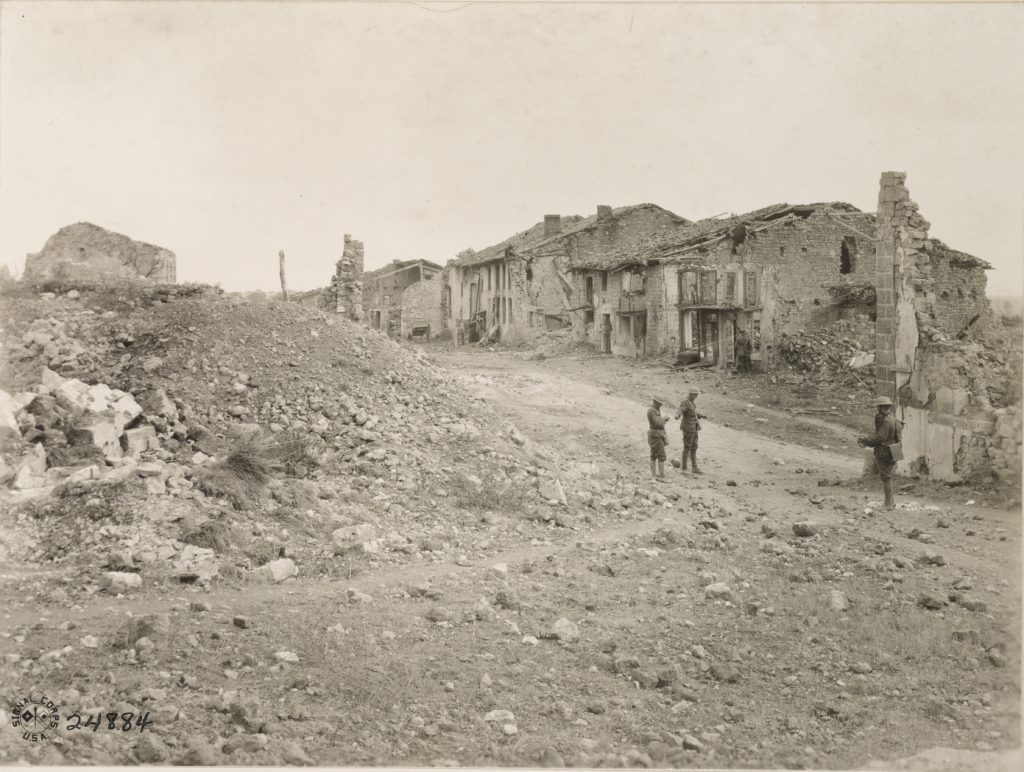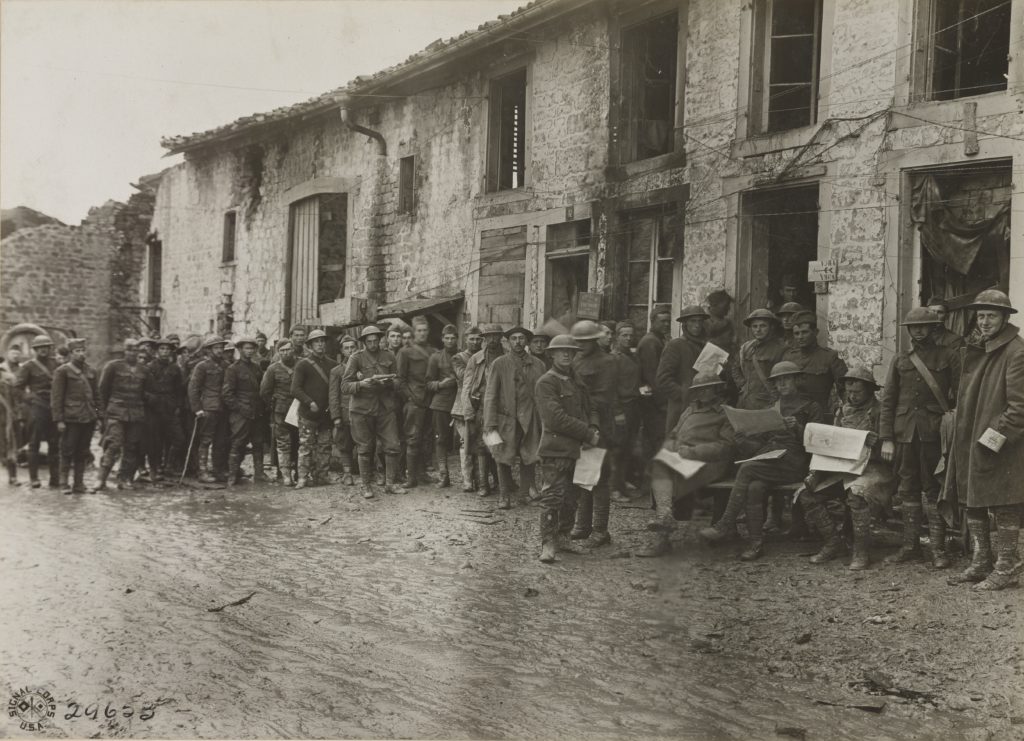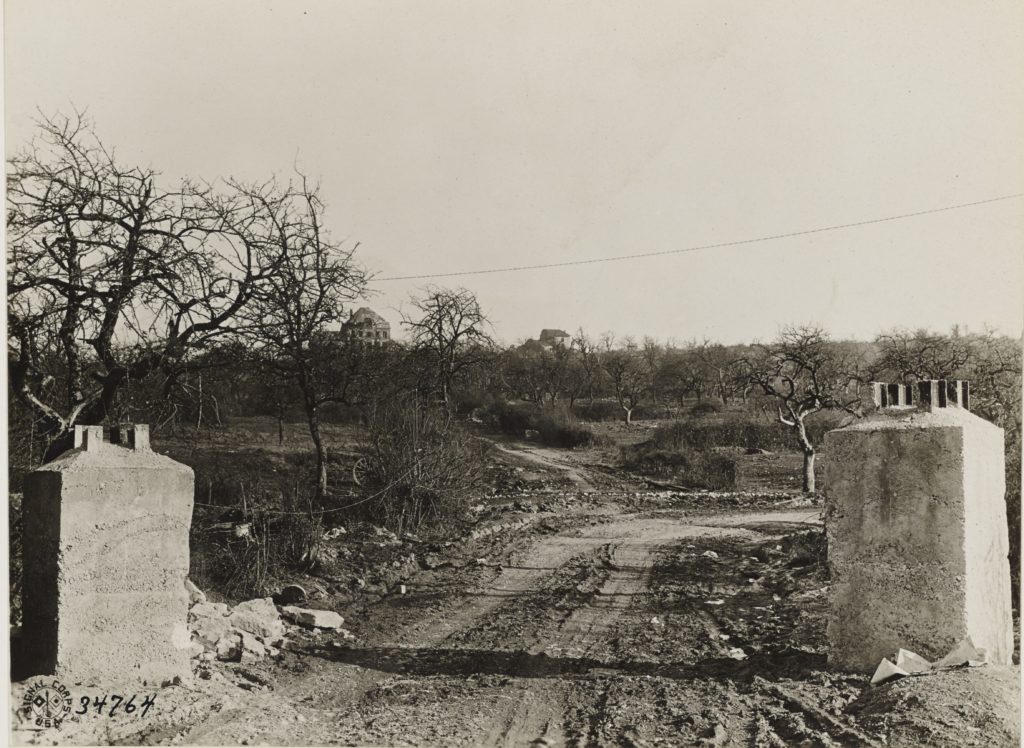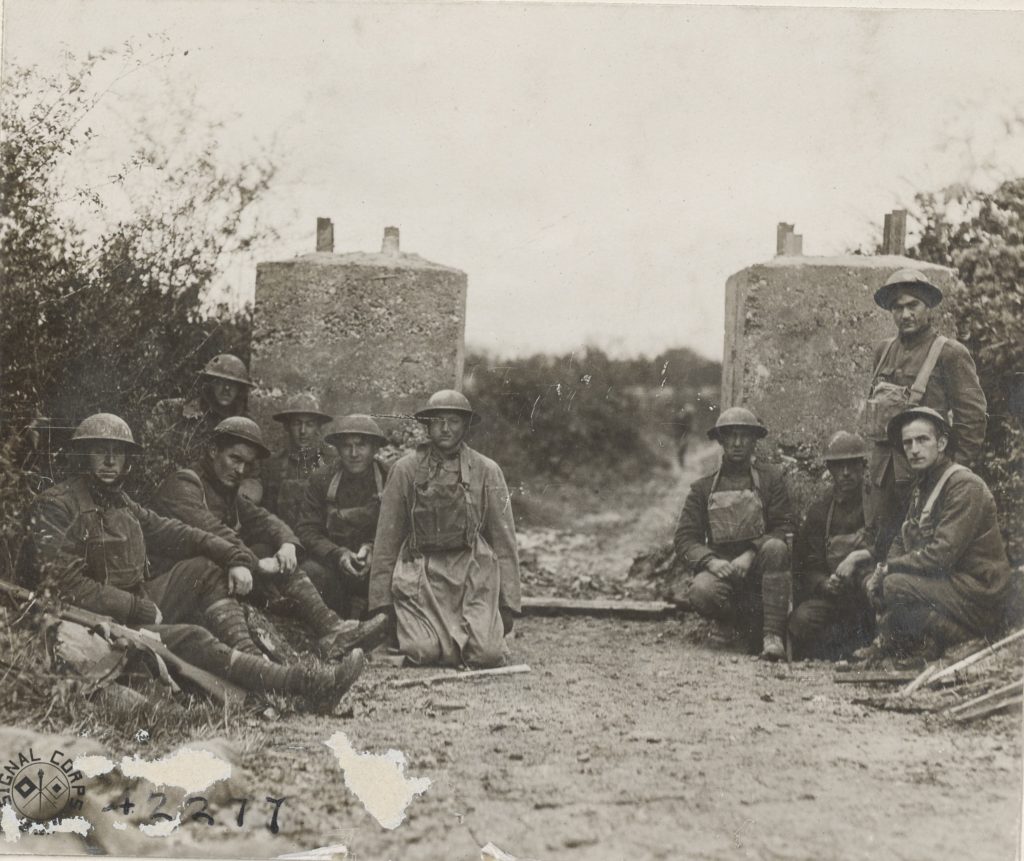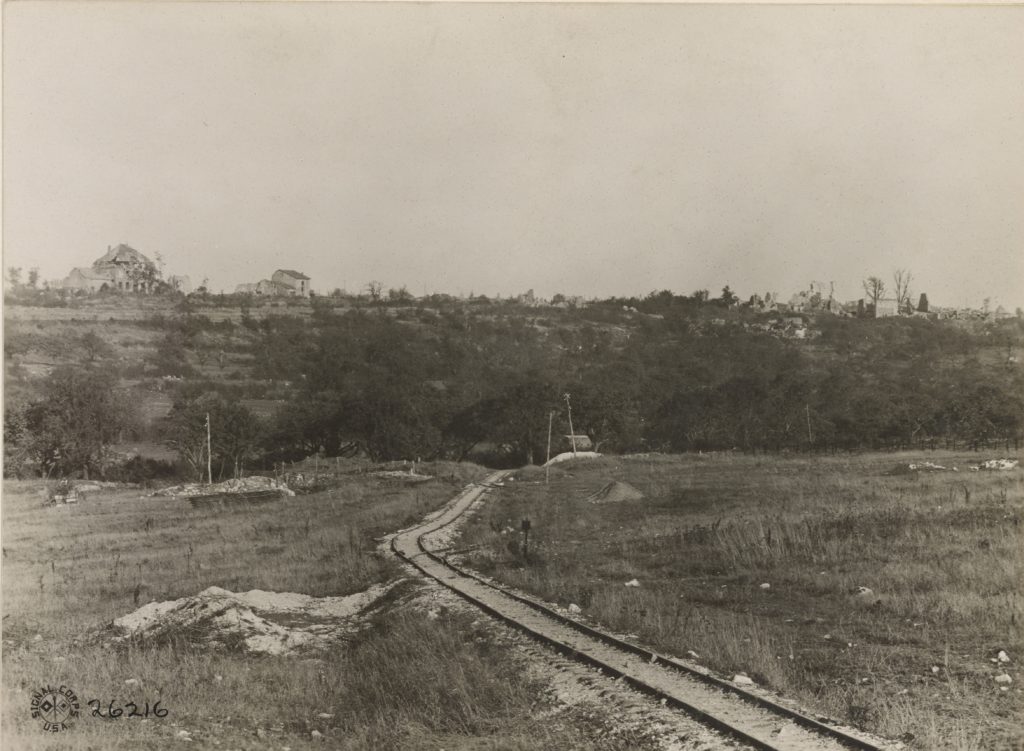
SC#26216: “Town situated at the highest point of the region is one of the best observation posts on the Western Front…” Photo taken 10 October, 1918. Source: National Archives, Record Group 111-SC.
Few sites on the Meuse-Argonne American battlefield are as heavily visited as Montfaucon d’Argonne; and yet it remains difficult to “see” the town as it looked at the end of the war. Moving from a destroyed village to a preserved memorial park that can be visited safely by thousands annually requires considerable clean-up and sanitization. Thus, one sees the Memorial, the (enhanced) church ruins and a scattering of observation pillboxes, along with some good signage; but one does not see the ruined town as it existed in late 1918 / early 1919. This post hopes to show readers a bit more of Montfaucon d’Argonne as it existed then.
In recent years, there have been two good books written on the 79th Division, AEF and the taking of Montfaucon: “Betrayal at Little Gibraltar…” by William Travis Walker (2016) and “With Their Bare Hands…” by Gene Fax (2017.) A brief excerpt from “With Their Bare Hands” serves as a starting point: “Having taken the town, the Americans now had a chance to examine their prize. They found an amazing array of defensive works, some of them German-built and some adapted from pre-existing structures. Many of the hilltop homes had deep wine cellars with arched stone roofs; the Germans had connected these with galleries and used them as observation posts and machine gun positions. More than a hundred dugouts were eventually found in and around the town, as well as in the Bois de la Tuilerie. On the northern slope was a camp of about 30 buildings including barracks, storerooms and officers’ quarters. Especially impressive were 17 concrete shafts, inserted into ruined buildings, the tops of which housed observation rooms. The most spectacular of these was a massive tower inside a three-story house on the western side of the hill, inside which was a telescopic periscope mounted on the ground floor and protruding through the roof, from where the entire countryside could be observed. (Fax, pp. 263-4.) (Note: See “Then and Now: Crown Prince House in Montfaucon d’Argonne” for a look at the Crown Prince Observatory on the hill.)
This Then and Now post is following a slightly different format than usual, because of the large number of “then” photos used. The first set of these “then” photographs can be easily matched up on the hill. Therefore, they are described as “stops” at various points. The latter photos do not provide enough clues to match up; but they do give a good look at Montfaucon d’Argonne.
Stop 1: Griffin Group Photo AM-868 showing a German dugout in Montfaucon. This dugout is right by the car park, situated to the left of the pink shed. There are two items to note: First, the two German plaques placed on the dugout have disappeared over the years. Second, for safety, the dugout entrances have been filled in. Photo taken in early 1919. Source: National Archives, Griffin Group Photos, Record Group 120-G.
Stop 2: SC#24885. View of Montfaucon in ruins, showing ruined church in the background. It was taken along the road on the western edge of town that runs to the church ruins. This photo can be easily lined up using the church as a backdrop and focusing on the left and right bends in the road. Today, a grassy hillside–built from a rubble pile, no doubt, has replaced the buildings that once stood there. This is obviously part of the sanitizing process needed to allow safe visitation. Photo taken 2 October, 1918. Source: National Archives, Record Group 111-SC.
Stop 3: Griffin Group Photo AM-870 showing the ruins of church in Mountfaucon. Readers should line up the then and now carefully. They will note that the current outline of the church walls and pillars is much more extensive than in this early 1919 photo. The post-war build-up of the walls and pillars helps viewers envisage the church. Photo taken in early 1919. Source: National Archives, Griffin Group Photos, Record Group 120-G.
SC#53188. Another view of the church remains, showing numerous dugout entrances that have been filled in. Photo taken 19 February, 1919. Source: National Archives, Record Group 111-SC.
Stop 4: Griffin Group Photo AM-871, showing tomb used as observation post by Germans. This is situated in the top part of the cemetery, which is just behind the Memorial and on the other side of the church. It can be easily lined up by focusing on the two large tombs in the foreground and the large tomb perpendicular to them in the background. Obviously, the makeshift German observation tower on the middle tomb has been removed today. Photo taken early 1919. Source: National Archives, Griffin Group Photos, Record Group 120-G.
Additional Photos Showing Montfaucon in Late 1918 / Early 1919
SC#24884. View of Montfaucon showing members of the 5th Field Signal Battalion stringing wires while the town is under shell fire. Photo taken 2 October, 1918. Source: National Archives, Record Group 111-SC.
SC#29653. American soldiers of the 3rd Division at American Y.M.C.A. getting candy and other articles. Mr. R.C. Shreve of the Y.M.C.A. in charge. Photo taken 17 October, 1918. Source: National Archives, Record Group 111-SC.
SC#34764. Reinforced tank obstacles built by Germans in all approaches to hill of Montfaucon, Meuse, France. There were three of these in each road. Photo taken 22 November, 1918. Source: National Archives, Record Group 111-SC.
SC#42277. 112th Engineers (37th Division) taking a few minutes rest near Montfaucon during Battle of the Argonne. Note concrete pillars placed at road by enemy to check our advance. Photo taken 28 Sept., 1918. Source: National Archives, Record Group 111-SC.
One final note on Montfaucon: The Webmaster finds the night-time views of the tower just as stunning as the day-time views from the observation platform. Visitors are strongly encouraged to view the Memorial at night too.
